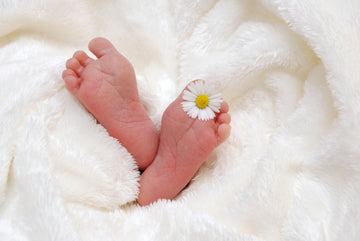For parents dealing with infant reflux, finding ways to soothe their little one can feel like an uphill battle. One common question many parents ask is: “Can a pacifier help with reflux?”
The short answer is yes, in many cases, pacifiers can provide some relief. Let’s dive into how pacifiers work, their potential benefits for reflux, and what to consider when using one.
What Is Infant Reflux?
Infant reflux, also known as gastroesophageal reflux (GER), occurs when a baby’s stomach contents flow back into the esophagus. This can cause discomfort, spit-up, or fussiness, especially after feeding. While mild reflux is common in babies and often resolves on its own as their digestive system matures, parents often look for ways to ease their baby’s symptoms in the meantime.
How Can a Pacifier Help?
Pacifiers work by stimulating a baby’s natural sucking reflex, which has been shown to have soothing effects. Here’s how a pacifier may help with reflux:
Encourages Saliva Production
Sucking on a pacifier stimulates saliva production. Saliva can help neutralize stomach acid, which may reduce irritation in the esophagus caused by reflux.Promotes Swallowing
Increased swallowing helps clear refluxed stomach contents from the esophagus more quickly. By encouraging swallowing, pacifiers can reduce the time that stomach acid lingers and causes discomfort.Triggers the Calming Reflex
Sucking is a natural soothing mechanism for babies. Pacifiers can help reduce fussiness and crying, which can sometimes worsen reflux symptoms due to swallowed air or increased abdominal pressure.Keeps the Lower Esophageal Sphincter Closed
The act of sucking may help keep the lower esophageal sphincter—a muscle that separates the esophagus from the stomach—slightly tighter, reducing the chance of stomach contents flowing back up.
What to Keep in Mind When Using a Pacifier
While pacifiers can be helpful for managing reflux, it’s important to use them wisely. Here are a few tips:
Wait Until Breastfeeding Is Established
If you’re breastfeeding, experts recommend waiting until your baby is around 3-4 weeks old before introducing a pacifier to avoid nipple confusion.Use It After Feeding, Not During
Avoid using a pacifier immediately after feeding while your baby is still full. This can lead to more swallowed air, which may aggravate reflux.Choose the Right Size and Shape
Look for a pacifier that suits your baby’s age and mouth shape for maximum comfort and safety.Don’t Overuse
While pacifiers can be a helpful tool, over-reliance on them may not address the underlying causes of reflux.
When to Talk to Your Pediatrician
If your baby’s reflux is severe, causing poor weight gain, significant discomfort, or frequent vomiting, it’s important to consult your pediatrician. They may recommend additional interventions, such as adjusting feeding positions, changing formulas, or medications in extreme cases.
Final Thoughts
Pacifiers can be a simple and effective way to help ease the symptoms of reflux in babies. By promoting swallowing, reducing stomach acid irritation, and calming your baby, pacifiers may offer some much-needed relief for both your little one and you.
However, every baby is unique, so what works for one may not work for another. Always observe how your baby responds and talk to your pediatrician if you have concerns about their reflux.
Parenting is all about finding what works best for your baby—and sometimes, a small tool like a pacifier can make a big difference!





